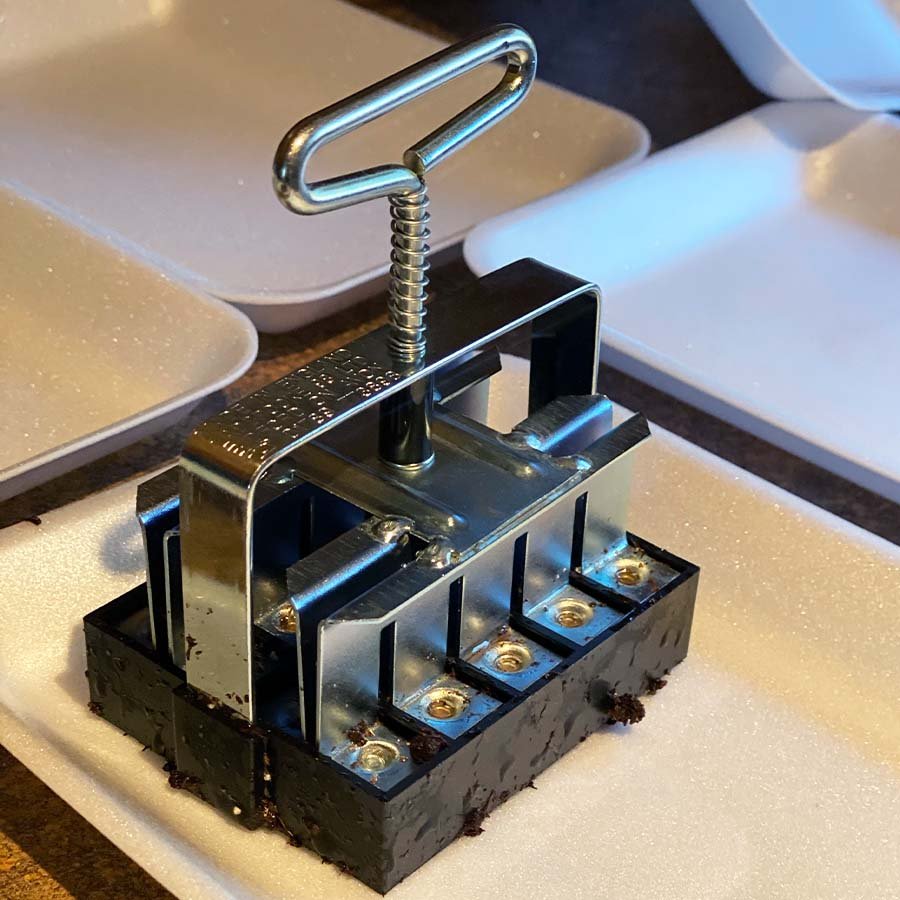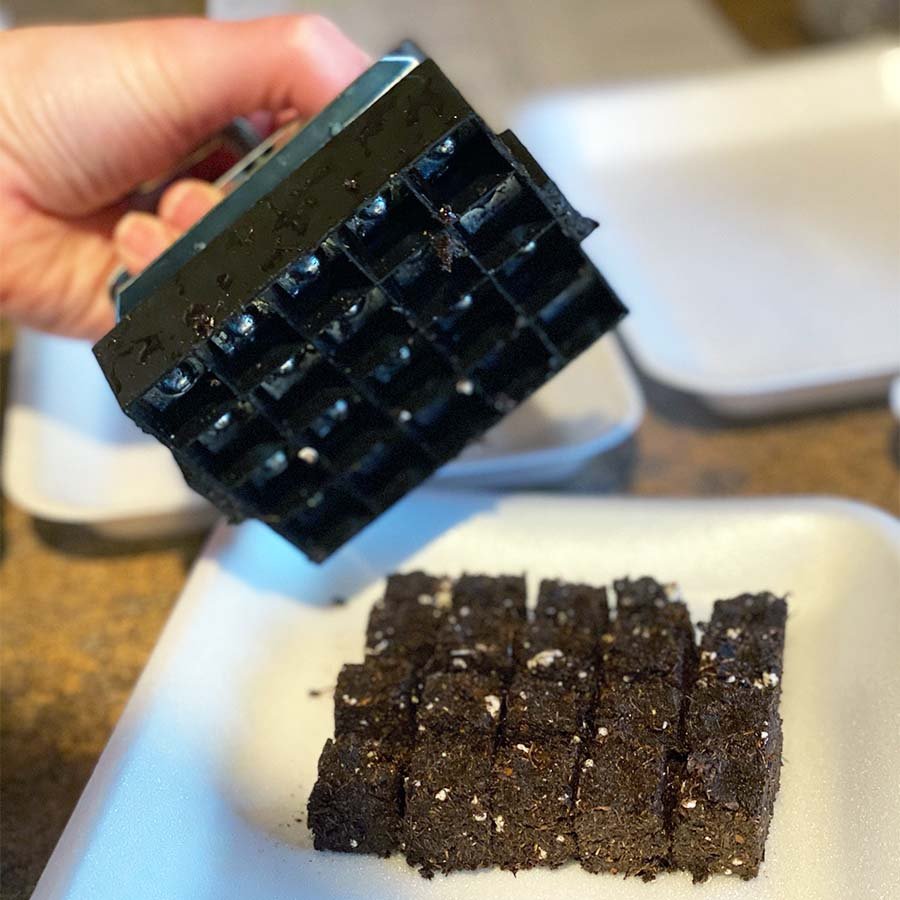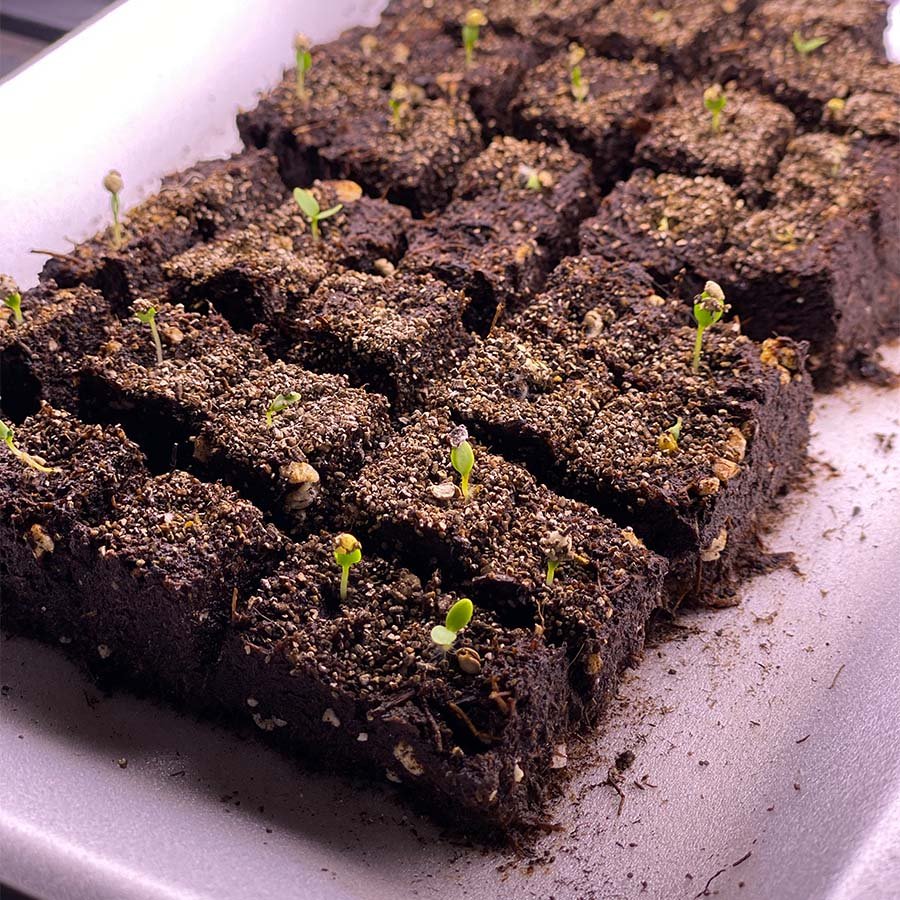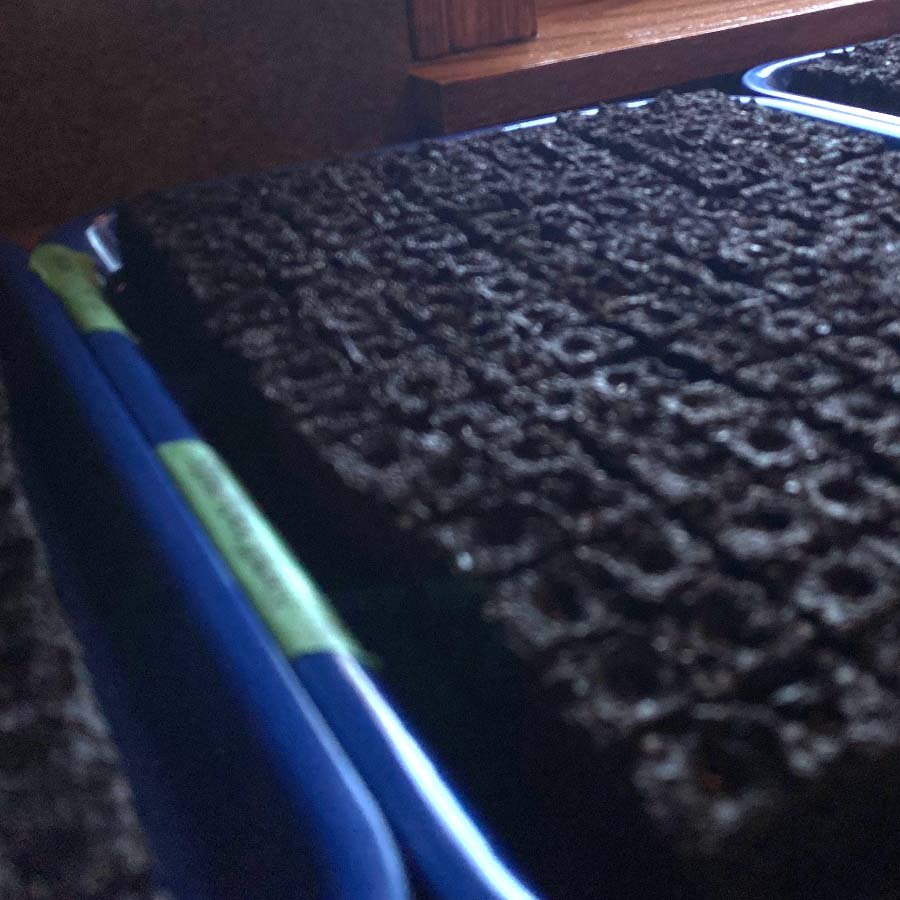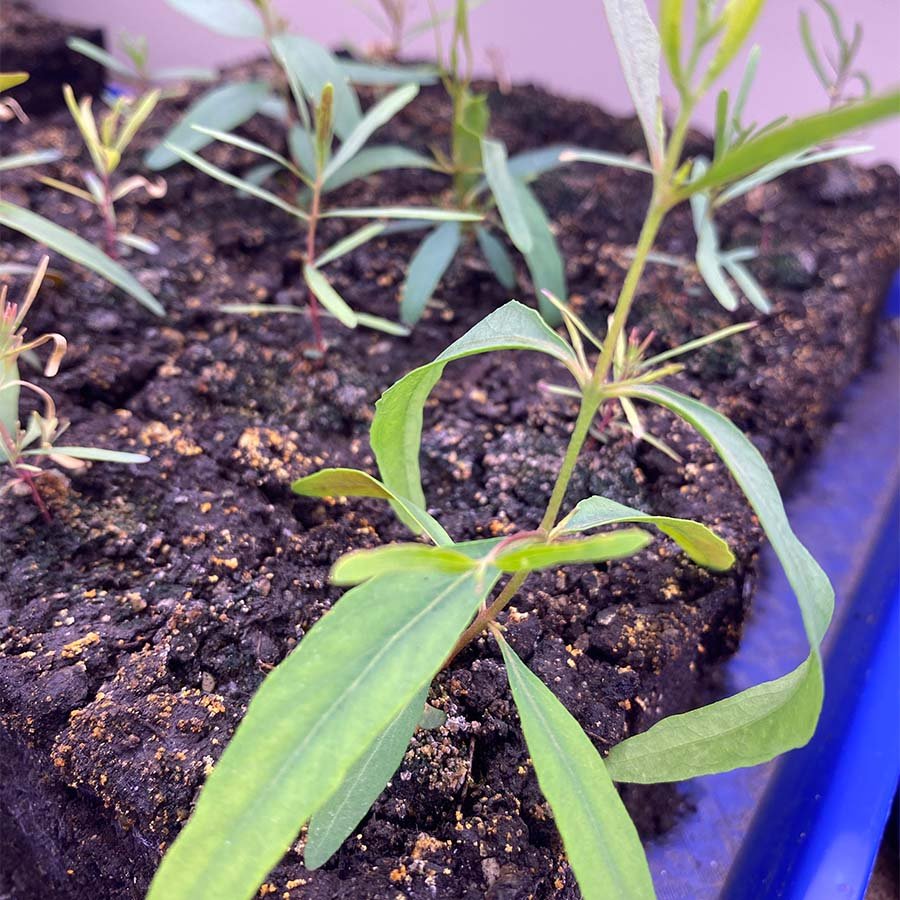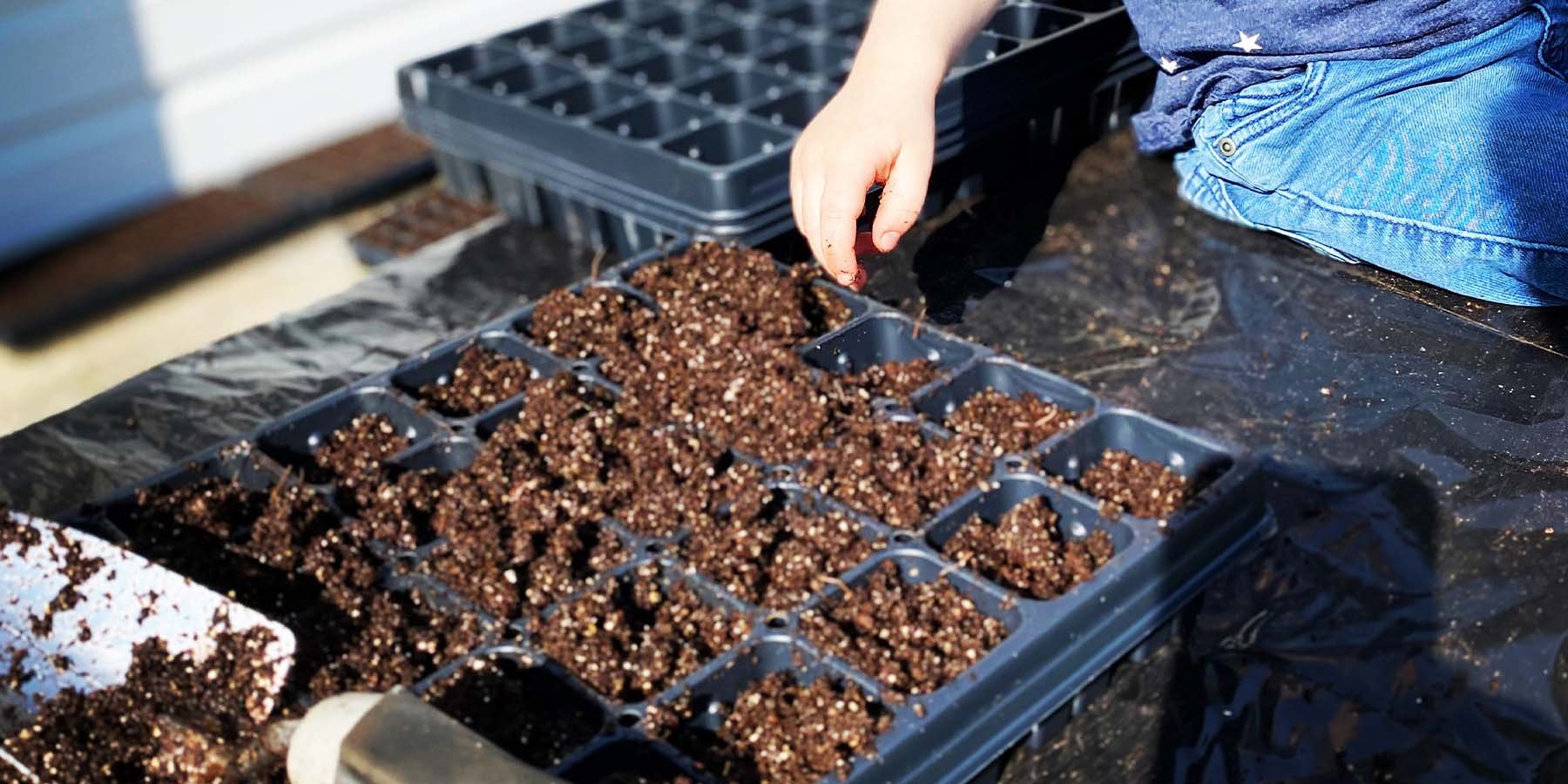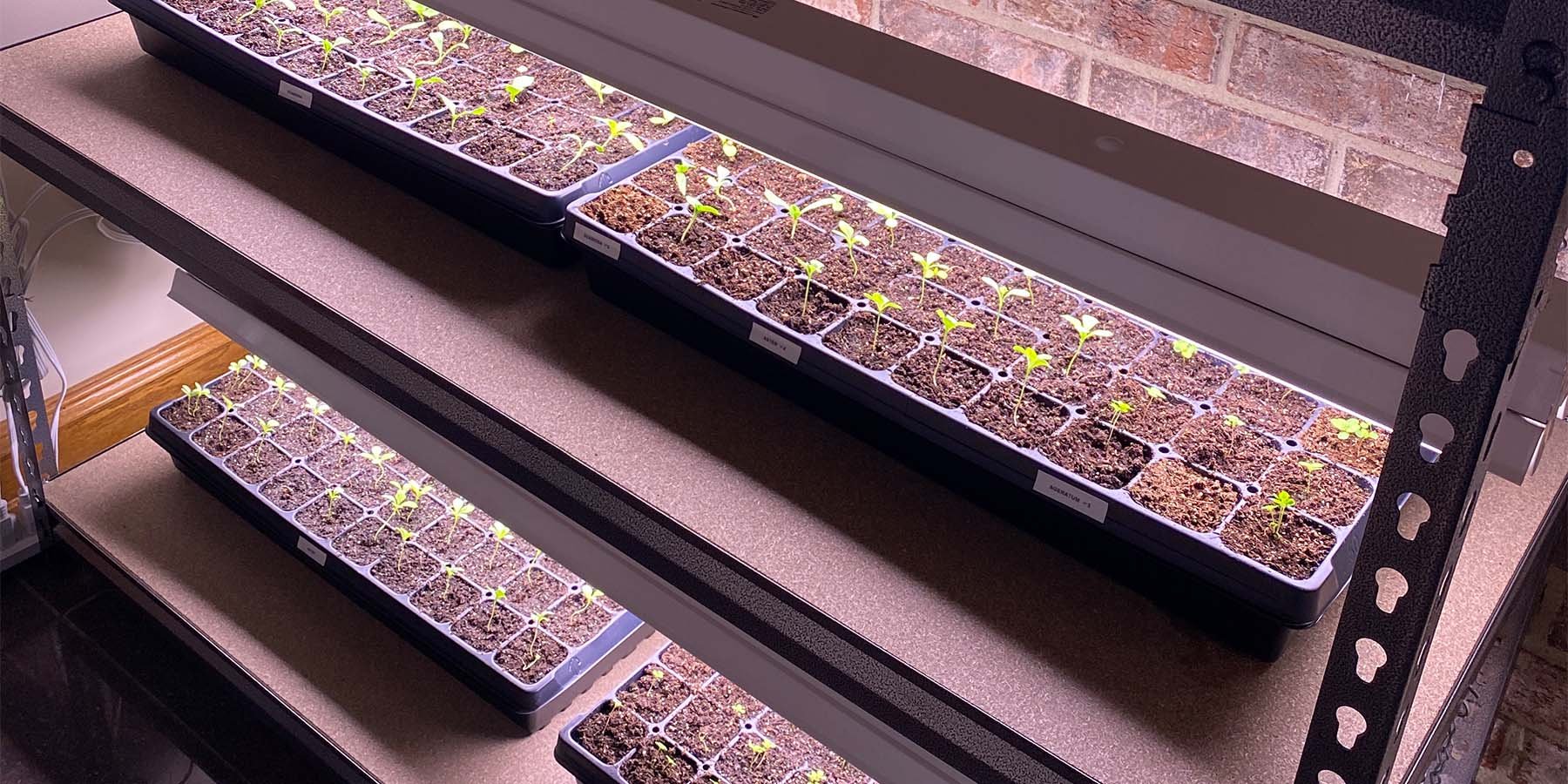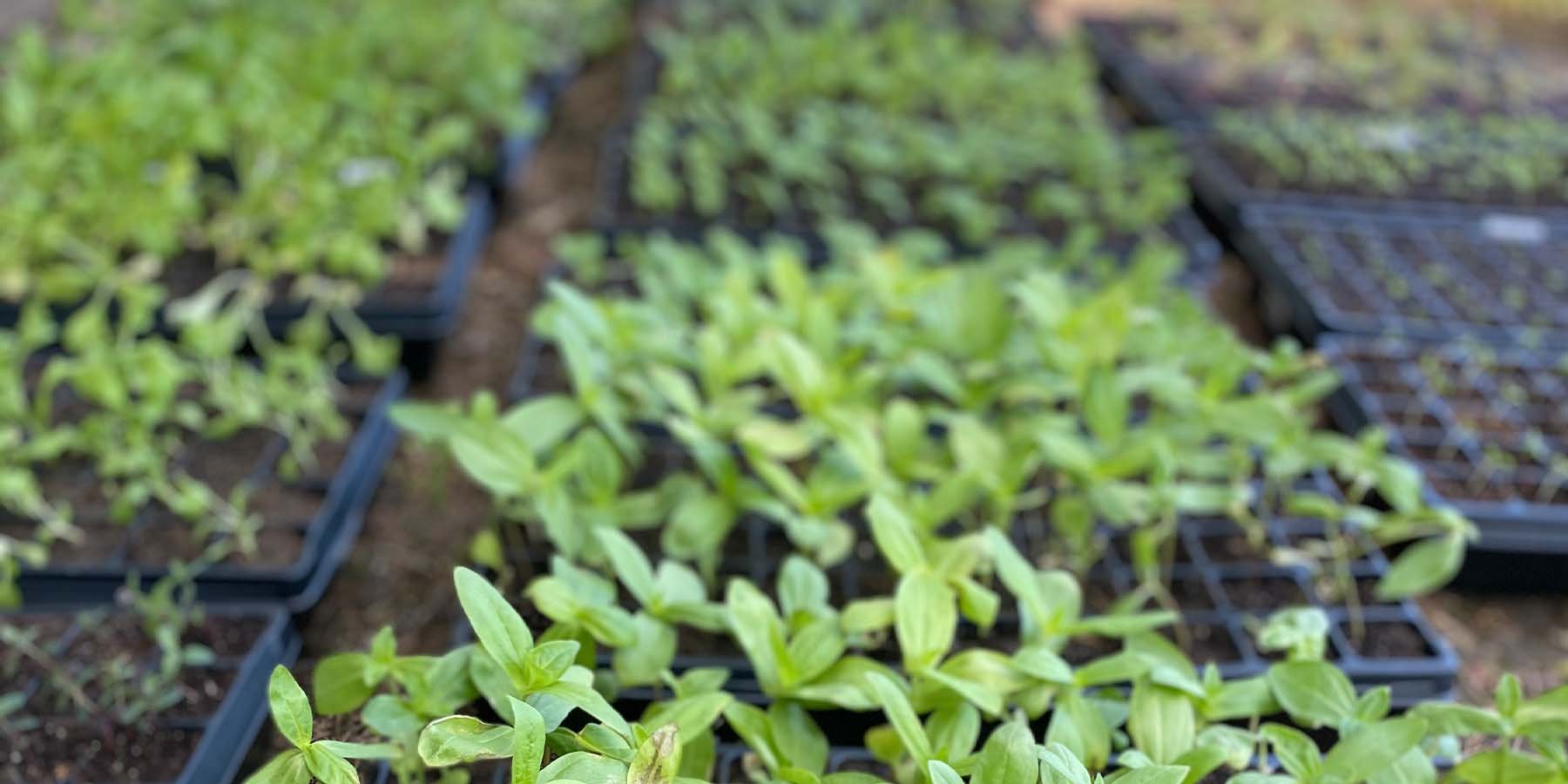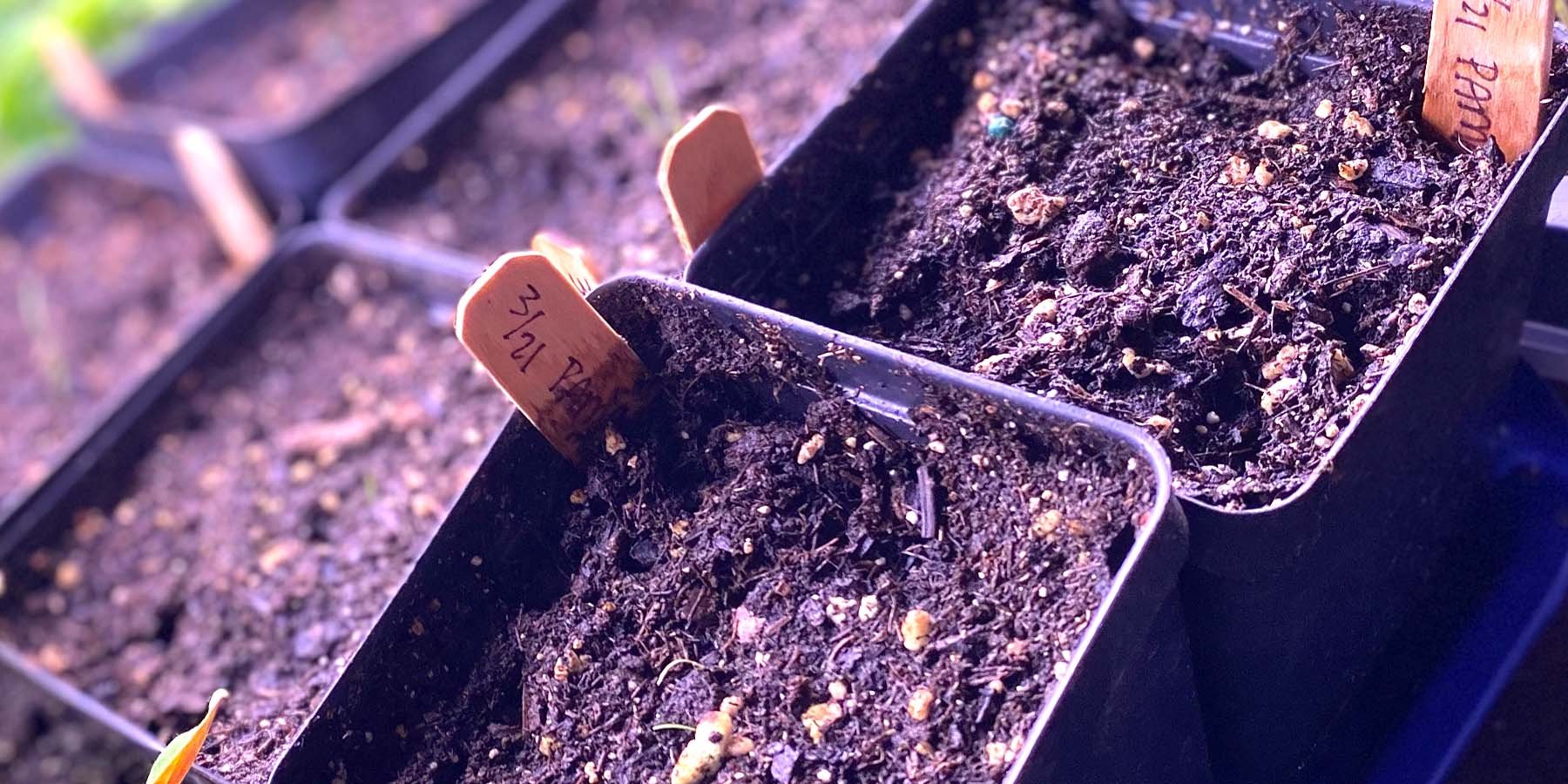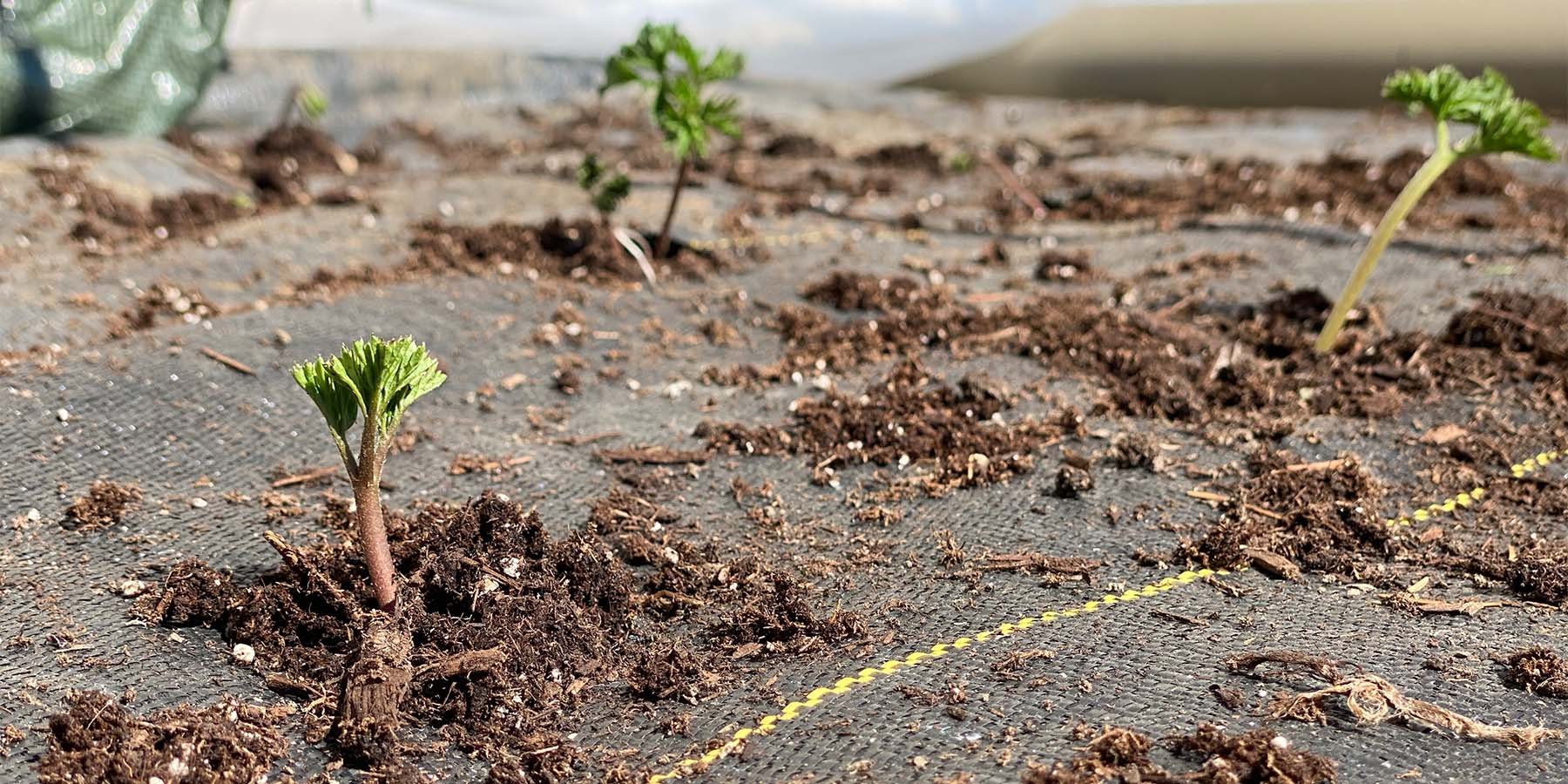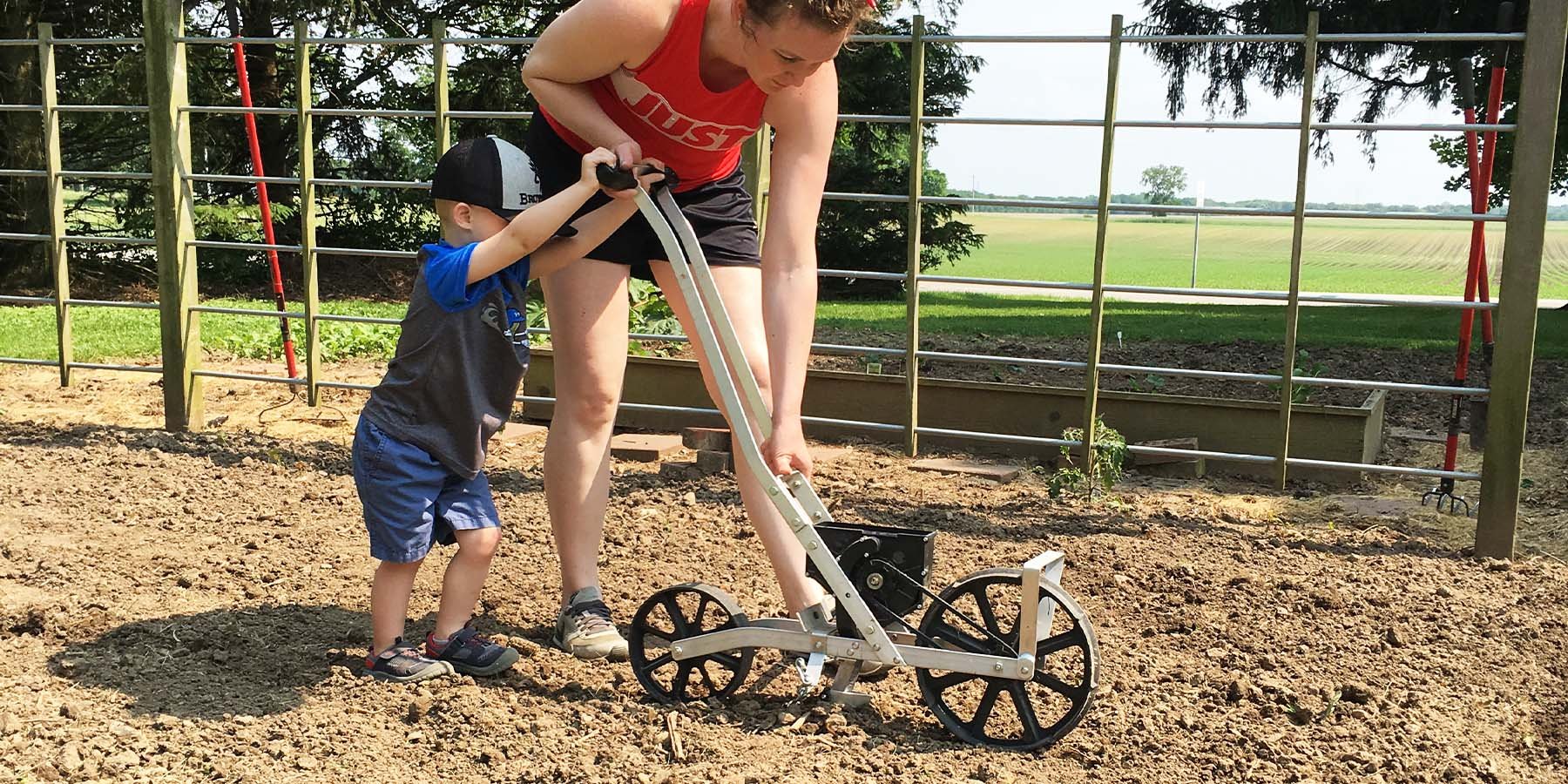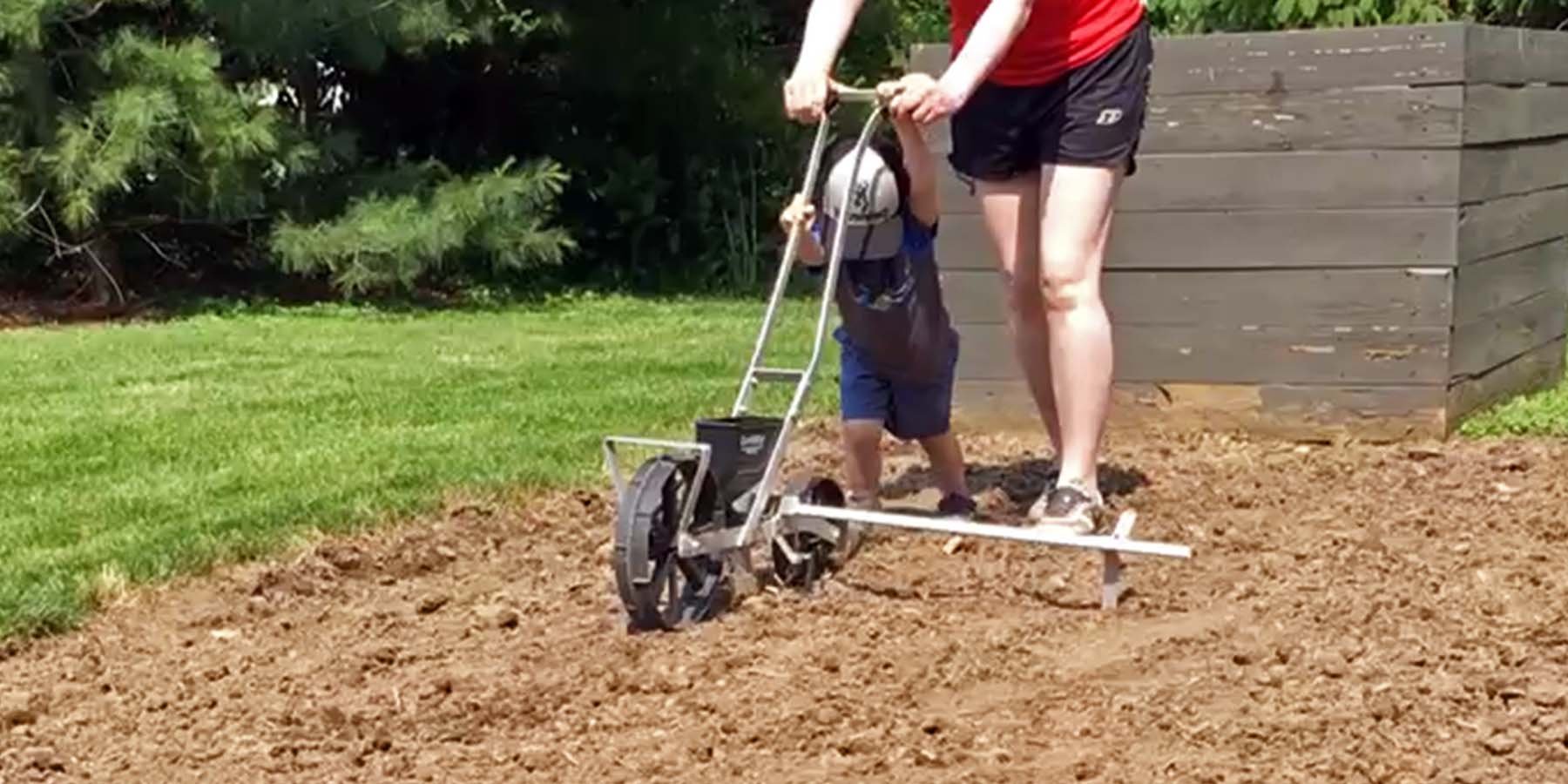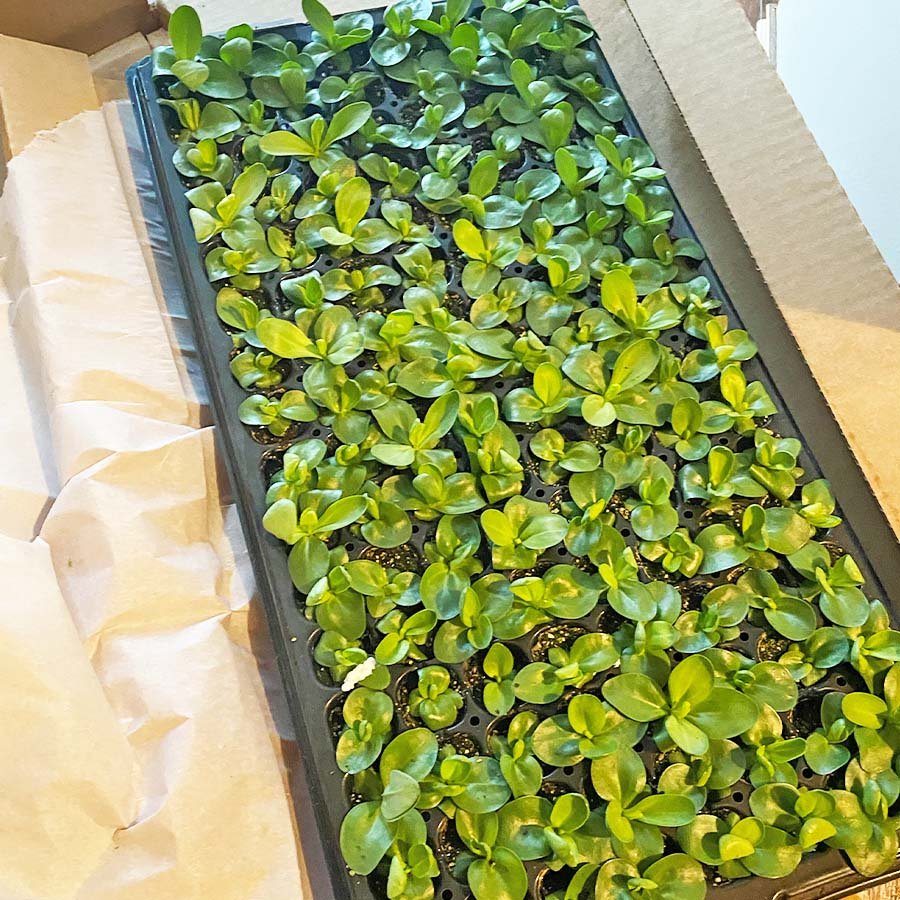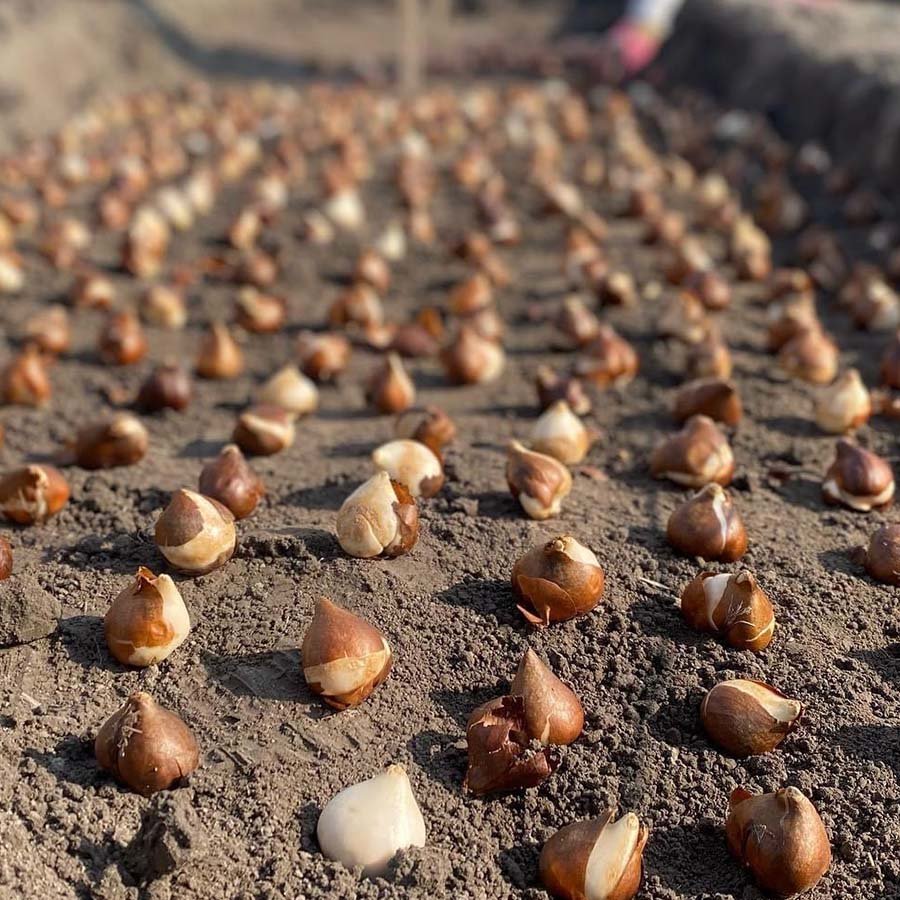it’s time to start seed
Every year around early February, after we’ve recovered from all the holiday bustle, I am ready for winter to be over and dream of warmer days and getting my hands dirty in the soil again. While most of the field work is still several weeks away, there is plenty to do in preparation for flower season and at the top of the list is sowing seeds.
Starting our own seeds allows us to get a jump start on the season with larger established plants to transplant in the garden field as the weather warms. Larger plants have a better chance of contending with weed and insect pressure too. It also has the advantage of allowing us to grow hundreds of specialty flowers you won’t find at local nurseries or stores. Plus, it’s the most affordable way to garden.
Indoor Seed Starting
We don’t have a greenhouse, so everything we start early and sow indoors is started in our house, on a shelving unit under grow lights. It is easy, inexpensive and a great way to grow lots of plants in a small space!
Pine & Posey Grow “Room”
We dedicate 4 shelves with 8 grow lights (2 per shelf normally) as our indoor seedling area. These shelves are filled 8-9 months of the year with various plants!
Depending on what type of flower we are starting, we use a few different seed starting methods.
Soil Blocking
The soil blocking method is a favorite of ours because of our lack of indoor grow space. Because most of the 3/4” soil blocks we use are much smaller than other traditional seed starting methods in containers, we can grow thousands of plants in the same space. Soil blocking allows a vigorous seedling with roots that quickly reestablish growth upon transplant because of the air movement around the blocks, whereas in other plastic or pot methods, roots are more compacted and restricted. Soil blocking also eliminates the expense, waste, and storage associated with plastic pots. We start nearly 75% of our flowers in soil blocks.
Cell Trays
Another proven method of seed starting is sowing seed in soil of plastic cell trays. Some of the flowers we grow need a bigger root ball or need more time to establish as seedlings before transplant or don’t like the stress of transplanting so we start these in plastic seed-starting cell trays atop bottom flats. Our favorite cell trays are the 72s or 50s - we start lisianthus, eucalyptus, sweet peas, bupleurum, and a few others in these.
Pots
Finally, a few plants require more space and we start those in pots. Dahlias and pumpkins are a perfect example of where we prefer pots to start seedlings. Presprouting dahlias in pots give us time for cuttings for new plants from the same mother plant. And pumpkins and some perennials we start from seed need more room because we grow them inside longer.
Direct Sowing
Not all plants need special treatment or the extra jump start on the season, and those we direct seed in the garden either by hand or with a walk-behind Earthway seeder. Sunflowers and corn are two crops we grow by sowing directly in the soil of the garden field. Both of these seeds are larger enough to use the Earthway seeder and it makes fast work of the task.
BUYING Plugs, bulbs, etc.
Another viable option to growing plants in the garden is to purchase established plugs, bare-root seedlings, bulbs, tubers, or plants. We’ve done this and depending on the variety sometimes it’s more economical and efficient to purchase established seedlings or plants from other farms or nurseries. Our evergreen trees are purchased as bare-root seedlings or plugs each year for planting in the Christmas tree field. We also optioned to purchase lisianthus plugs this year because of the time needed and difficulty of growing those flowers. Our tulips, anemones and ranunculus varieties are purchased every year as bulbs/corms since we grow for cut flowers and those plants can’t regenerate without foliage staying on the plant. Our daffodils and other perennials have been purchased as bulbs or established shrubs/plants also.



